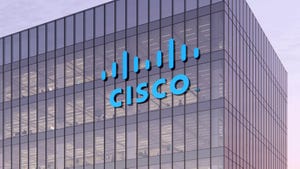New York 'Donut' Boosts NJ Data CentersNew York 'Donut' Boosts NJ Data Centers
Wall Street disaster recovery criteria are boosting the
March 10, 2008
It's known as "the donut," and it defines the hottest locations for data centers serving Wall Street financial institutions. Its inner and outer boundaries are established by criteria for disaster recovery, including the blast radius of a nuclear attack and the limitations of real-time data replication. Power considerations take several more big bites out of the donut.
What's left is a ring of land in New Jersey that has become the focal point of data center development for New York's financial industry and enterprise companies. Many data centers in northern New Jersey are at or near capacity, and suitable development sites in those counties are becoming scarce.
"There is no data center space in the New York and Northeast corridor," said said Shally Bansal Stanley, managing director for global services at Acumen Solutions. "It's driven a lot of companies to change how they buy build and manage their data centers." Stanley moderated a panel on data center real estate at DataCenterDynamics New York last week, which focused on the challenges of finding colocation space or building data centers in the New York market.
"Site selection is really a challenge in the New York area," said Jim Smith, vice president of engineering at Digital Realty Trust. "The doughnut - a 30 kilometer to 70 kilometer circle around New York - defines the space where you can look. There's lots of sites. But finding the right combination of location power and security is the challenge. A lot of our processes began months in advance. We spend a lot of time driving around with PSE&G guys looking for power."
For Digital Realty (DLR), that search has led to Piscataway and Franklin Township, two towns bordering Rutgers University in central New Jersey. In 2006 the company bought 3 Corporate Place in Piscataway and renovated it for data center use. Two-thirds of the space was quickly leased to Savvis (SVVS) and AT&T. Last month Digital bought an adjacent property in Piscataway, and signed a contract on another site in neighboring Frankin Township, which will also be home to a Morgan Stanley data center.
The "hole" in the donut is driven by financial regulators' desire for disaster recovery data centers that can support a same-day recovery from a regional disaster affecting the New York area. At the time of the Sept. 11 attacks, many Wall Street firms had secondary data centers in Manhattan, Brooklyn and Northern New Jersey. Regulators wanted to ensure that disaster recovery centers were distant enough so that a single event on the scope of a nuclear explosion couldn't destroy both the primary and secondary facilities.
At one point, regulators considered setting a minimum distance for "geographic diversity" for data centers. A sticking point was the ability to perform real-time active-active backup, which is resricted by distance limitations of storage networking protocols of about 100 kilometers (62 miles).
An audience member, noting Smith's mention of a 30 to 70 kilometer target area, asked about the upper limit for financial customers. "With active/active backup, we've seen some 100 kilometer replication, and we've seen some 15 kilometer replication," said Smith. "The vendor community is willing to be a lot more aggressive (on distance) than the end-user community."
That distance limit is crucial to some business plans. The inquirer was with Wall Street West, which is investing millions of dollars in state and federal funding to establish eastern Pennsylvania as a destination for backup facilities for Wall Street firms.
The group's marketing notes that its Pennsylvania sites are "located within the 125 fiber miles necessary for the synchronous data transmission needed by many financial services firms." The Pennsylvania cities closest to Manhattan, Easton and East Stroudsburg, are each about 65 miles away - about 105 kilometers.
Stanley said that not all decisions are governed by hard and fast rules. "In some cases, the replication technology is being revisited and adjusted to suit the location of the data center," she said.
Read more about:
North AmericaAbout the Author
You May Also Like






